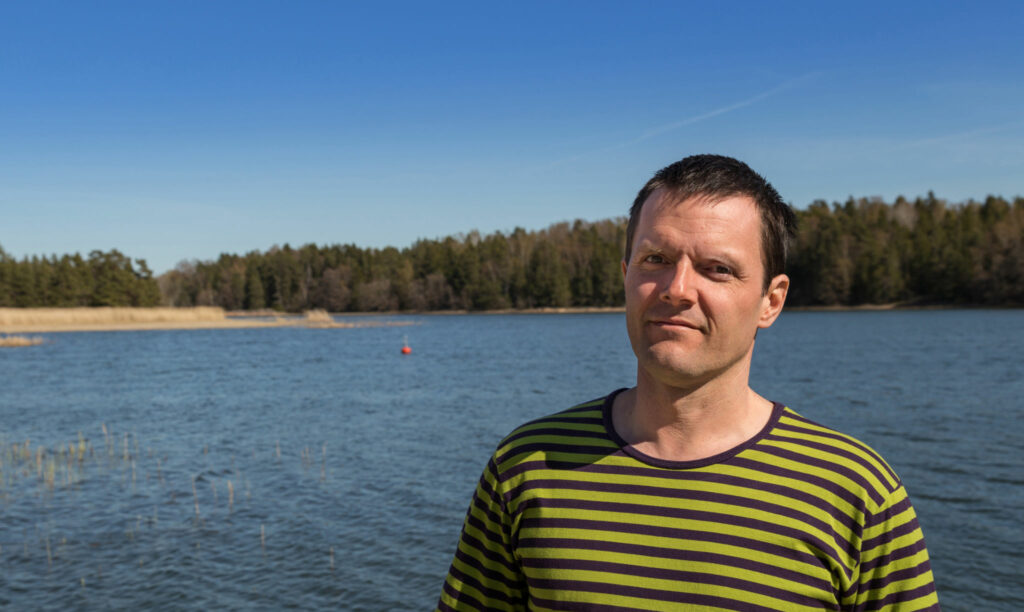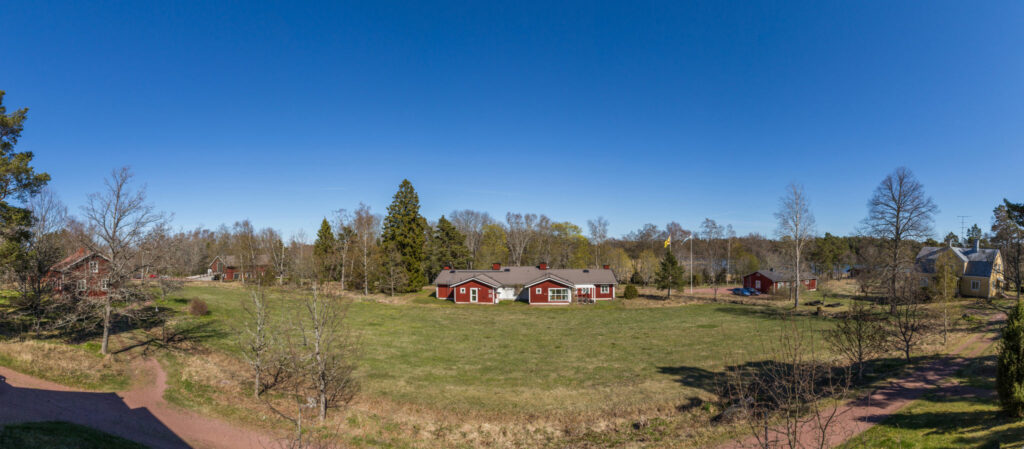5.2.2018
Eutrophication and climate change. These are two central concepts within research at the Husö biological station on Åland. The research area is wide, covering both the surrounding coastal waters and lakes on the islands. Martin Snickars has been head of the biological station since last autumn. The field station belongs to Åbo Akademi University, and is used by environmental and marine biologists, among others.
“We have studied the individual effects of eutrophication for a long time, but lately we have increasingly also looked at climate change, and at how eutrophication and climate change together impact flora and fauna in aquatic environments.”
“Changes are happening at a faster pace than many researchers have thought, and the development is considerable when looking two, three decades back. For example, climate change can be detected in the water samples that have been taken regularly at Husö since the 1980s. Salt levels have gone down, as have pH levels, while the water temperature has risen. Marine biological research at Husö indicates changes in both the fish and sea-bed fauna populations in the shallow coastal ecosystems. This is not unique for Åland.”
“Deep waters are also getting warmer, a situation which results in less oxygen being released. It also functions somewhat like a compost, as the warmth promotes algae production in the water, and the warmer it is, the more oxygen is consumed when algae decompose on the sea bed. In addition, warmer water can release less oxygen.”

In other words, climate change further accelerates the consequences of eutrophication.
“Various international research groups predict that in order to compensate for the effects of climate change on the marine environment, we should reduce emissions even more than we have so far undertaken to do in international agreements,” Snickars says.
But even if it were possible to completely cut all emissions, it would take a long time for the Baltic Sea to recover. Snickars refers to Irma Puttonen’s recent doctoral theses in environmental and marine biology at Åbo Akademi, the results of which show that the internal phosphorus load may remarkably delay the improvement of water quality. Puttonen studied water in an area between Turku in Finland and Stockholm in Sweden, but the results probably pertain to the entire Baltic Sea.
Puttonen’s research showed that serious oxygen deficiency increased the internal phosphorus load from the sediments, even in relatively shallow coastal environments, but also that phosphorus may be released from oxygenated sea beds.
The internal phosphorus load advances high primary production in water, which results in the water being more turbid, toxic and harmful cyanobacterial blooms being common, and oxygen deficiency stressing the fauna of the sea bed. Chronic and high-level oxygen deficiency at the sediment surface leads to the formation of toxic hydrogen sulphide, which in turn can erase sea-bed fauna populations.
“Marine biologists are concerned about the changes happening simultaneously in coastal waters and in the open Baltic Sea. Many aquatic organisms and habitats are evidently affected by the joint impact of eutrophication and climate change. Basically the only solution is to reduce emissions and wait. Results will not be seen overnight,” Snickars says.
Researchers have pointed out for a long time that emissions should be reduced; why doesn’t anybody listen to you?
“These are awkward decisions for politicians to make. But measures have been taken. For example, in the 1980s fish farms were a source of considerable emissions, but they have decreased in number, requirements are stricter and they have done a lot to lessen the emissions. Many farmers have also taken plenty of measures to decrease runoffs, among other things. These are large and difficult questions, as we all need food on the table, but more needs to be done for a cleaner sea.”
How do you react when people, starting with the president of the USA, claim that climate change is a myth?
“You can call it a myth or whatever you want, but we are seeing the changes; they are a fact. And as I said just now, climate change is advancing faster than researchers have predicted so far. For most people, climate change is something quite abstract, therefore we as researchers should be better at reaching out with our knowledge.”
Since 1961, the regional government of Åland has contributed to the funding of the Husö field station. Thus it has a certain influence on the activities carried out there. According to Snickars, this cooperation provides young students and researchers with valuable experience of applied research and authority-related work. For instance, the station helps to gather data on the ecological state of the waters, which the government uses to fulfil the water directives.
Husö is a member of the RESTAT network of Finnish research stations, and of the corresponding international network MARS. The station is also part of the research consortium FINMARI (Finnish Marine Research Infrastructure), which has received continued funding until the end of 2018 from the Academy of Finland. FINMARI has enabled the acquisition of new research infrastructure, such as new aquarium systems and measuring instruments for surveying marine vegetation systems. In addition, the station has a new measuring buoy which independently registers vertical profiles and provides researchers with real-time data from the waters of north-west Åland.
“The field station is of immense importance for our teaching and research. Here we can organise field courses to give hands-on training in marine-biological research. It’s something completely different from teaching in the lecture room,” Martin Snickars says.
He is quite new as head of the station, but not new at all to Åbo Akademi. He studied and completed his doctorate at the university, and returned there after working for a few years at the Finnish Forestry Board and Swedish University of Agricultural Sciences. In addition to Snickars, the field station has one more full-time employee, station manager Tony Cederberg.
“Usually there are about 20 people at Husö in the summer, from undergraduates and trainees to researchers and auxiliary staff. The station is also used for courses by other universities, both Finnish and international ones. We also welcome other subjects than marine biology at Åbo Akademi to use the facilities.”
As most of the station’s activities are focused around the sea, the summer is the natural high season. May to October are the liveliest months at Husö, although the station is also suitable for use in the winter.

More information at https://www.abo.fi/en/huso-biological-station/
Irma Puttonen’s thesis referred to in the article is available digitally at www.doria.fi/handle/10024/131068. Her supervisor was Johanna Mattila, who was previously head of the Husö station.